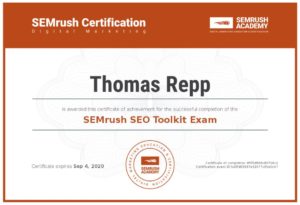 Have you recently noticed when you search for a specific product, a specific restaurant, a specific recipe or a specific definition you often receive a “rich snippet” that gives you EXACTLY what you were looking for in a nicely formatted box? Some call these “featured snippets”, some call them “answer boxes”. As a techie would say, “I use structured data to create rich snippets on my webpages.”
Have you recently noticed when you search for a specific product, a specific restaurant, a specific recipe or a specific definition you often receive a “rich snippet” that gives you EXACTLY what you were looking for in a nicely formatted box? Some call these “featured snippets”, some call them “answer boxes”. As a techie would say, “I use structured data to create rich snippets on my webpages.”
No longer is Google’s search engine return page (SERP) a simple list of blue headlines.
You may have also noticed that voice searches are becoming more accurate than your first attempts a few years ago. For example, “Siri, where can I get the best car loan rate?” or “OK, Google, where can I get spare electric motors in Kalamazoo?”. If you have not tried this, go ahead and open your Android or Apple device and try it. (Personally, I like Google’s Assistant as they have a lot more data for artificial intelligence to glean from, resulting in more precise answers.)
Let us explore how you can gain a competitive advantage using rich snippets.
Let’s say you are interested in “fixed indexed annuities” as an investment for yourself or your company and you go to Google and search for more information about “fixed indexed annuities”
In the example below note the free “ads” from each provider. Over the long term, imagine the return on brand building and top-of-mind awareness for your company. Again…all free. (Well…there is some hard work involved. Call it, “sweat equity”)

I know that you lay awake every night and wonder how Google (and other search engines) continually make search easier and more relevant.
Probably not!
Well, here is what you need to know about rich snippets to give your company a competitive advantage and dominance on Google’s search engine return page.
Allow me to digress a little and put this exercise into proper prospective before I get into the 4 steps.
First, keep in mind Google’s mission: “To build a knowledge database that people can access easily, through the search engine, wherever they may be.”
Most of you think of Google as an advertising platform. However, the search engine’s first task is to collect and collate data about EVERYTHING and return it to you with one click…or one voice search.
To that end, Google wants your web page and all its valuable information to be collated as quickly and efficiently as possible.
So…from my point of view, as an online marketer you have the responsibility to create web pages that are as useful to Google as possible.
It is synergistic relationship between your online strategy and Google’s mission. According to Neil Patel, the leading authority on SEO, “Google actually needs your web page to rank highly, maybe even more than you need to improve your search performance.”
Further, rich snippet tactics carry a more pivotal role when you consider the role of voice and mobile search in the future. How do you think Siri, Alexa and Google Assistant find your answers so quick when you ask, “Siri, where is the closest Pizza Hut?”
Further still, emerging artificial intelligence will give webpages that use the structured data of rich snippets a clear advantage.
Here we go…4 steps to competitive advantage.
Step #1: Understand the background of “rich snippets” and schema.org.
I have already given you a little background why Google wants to collate your company’s information as quickly as possible.
To Google’s end and their respective mission statements, Google, Bing, Yandex and Yahoo created industry standards in 2011. These search giants launched a collaborative effort called Schema.org to create industry standards to move all closer to their like-minded mission statements. www.schema.org
Schema.org established specific vocabulary called tags (some call it microdata) that can be added to the HTML code on webpages. These tags make it easier for search engines to understand and collate data. If the search engines recognize these tags on your webpage then your webpage and related topics are favored on the SERPs.
Schema.org helps web developers organize their on-page HTML. Schema.org has created 600 unique types of information across a wide breadth of specific categories and sub-categories. These categories have a unique hierarchy which helps the search engines understand their unique relationships. For example, here are a few of the categories used by Schema.org to help search engines crawl your web page and collate as efficiently as possible:
- Products
- Articles
- Events
- Offers
- Restaurant
- Postal address
- Job posting
- Ratings
- Date
- Recipe
- Breadcrumbs
Rich snippets typically come in 3 major formats:
- Paragraph: This is the most popular snippet to answer your questions.
- A list: Where the answer is formatted in a list.
- A table: Where the answer is in table format.
I will not get into the gory details on the best way to add Schema.org’s format to your website. However, most websites are built with content management systems (CMS) such as WordPress, Drupal, etc. Almost all CMS’s have specific plug-ins that allow the web developer to add the correct tags so that your company’s information is categorized, collated and formatted quickly…and in the format you want on the SERP.
But…and this is a BIG but.
Most web developers and content developers will not take the time to add these important tags to a web page. It takes time, resources and money to follow Schema.org’s lead. According to a Bing, Catalyst & Forrester survey in 2017 only 17% of marketers had implemented Schema.org mark up to their web pages.
Key takeaway for Item #1
When you decide to rebuild your website, go to Google and research “rich snippets”, “structured data” and “schema.org”. It is not complicated stuff, but critical for your next website rebuild. Once you understand why Schema.org tags and format are so critical you will be able to hire a web developer that will ensure your products and services get cataloged and collated to Schema.org standards, ultimately improving your company’s visibility.
Step #2: Know your customers’ persona
Whether you are building your website in-house or outsource your web development, you will need to have a grand content strategy concerning the best content to publish on your website. To develop that content, you will need to understand your customer’s needs. What makes them tick? What keeps them up at night? What questions do they typically ask your sales group?
By understanding your customers’ persona, you determine the best way to answer their questions. By answering your customers’ questions with blog posts, webinars, landing pages, e-books, white papers, etc. you can work with your web developers and content writers on the proper tags to insert to satisfy Google’s voluminous need for structured data defined by Schema.org
Key takeaway for Item #2
Do not start inserting tags from Schema.org on your webpages without a top-level content strategy first. This strategy should be guided by your own knowledge of your business AND your customers’ needs. Understanding these concepts will give you the queues and creative juice to build web pages that be will crawled and organize more efficiently.
Step #3: Measure the traction
So, now you have started your new website with a better understanding of the proper way to structure web pages to improve your company’s visibility. You have also made a commitment to develop content your customers’ truly need and love.
Just want to stay real…you are now a publishing company along with your mainline business.
Don’t want to be a publishing company?
Then tell me the alternative in the age of search, mobile, social and AI?
Now what?
Well, of course, “If you can’t measure it, you can’t improve it”. Thanks Mr. Drucker.
Depending on your long-term, online strategy there are hundreds of ways to measure the effectiveness of your online marketing efforts. You need to know such things as:
- How many new visitors to your website this month?
- What content resonates the most with your web visitors?
- Which of your webpages gets that most visits?
- How many leads have you generated with your new content strategy?
- What is the conversion percentage of web visits to leads for each piece of content?
- What is the conversion percentage of leads to sales revenue?
If this seems like a daunting task, it is…but well worth it.
But, you know as well as I, if you are going to go down the path of competitive advantage it will be a waste of resources if you do not measure your efforts.
I recommend investing in a marketing automation platform such as HubSpot. Marketing automation platforms measure and connect all your marketing assets the same way QuickBooks measures and connects your financial assets.
At this writing most of your mid-size marketing automation platforms do not include integrated tools to help plan & insert the right Schema.org tags. However, I know for a fact that leaders in the industry, like HubSpot, are planning to add tools to help navigate the tricky, yet rewarding, waters of Schema.org.
At this early stage of web and content development do not worry too much about the ROI of your online marketing efforts. At least, not yet.
Sure, over time you want you create a web strategy that creates income rather than expense. But early in your efforts it is best to focus on the content and pages that get the most traction from your web visitors.
Traction, at this stage, is the most important metric to measure. Measure items such as the bullet points outlined above. Figure out what content is getting the most traction and double your efforts on those bright spots.
Key takeaway for Item #3
Invest some time on research for a good marketing automation platform for your new web site. Most marketing automation platforms include an on-board content management system (CMS) where you can host your new marketing mothership…your website.
As I said, there are lots out there and most do not have the structured data tools built in. Soon, most marketing automation platforms will, giving you a significant competitive advantage.
Can you say, “Ahead of the curve!”
Step #4: Focus on SEO and double down on your great content
Now that you have built the foundation and you have the knowledge and tools for your awesome marketing effort, it is time to double down again on the content that has the most traction.
As some say, “Rinse and repeat”.
For example, let’s say one of your associates from an office other than your home office is an authority on “fixed indexed annuities” and writes a blog post titled, “How does a fixed indexed annuity work”? You used the best practices for on-page SEO and promoted your post via your favorite social media platform. Using your dashboard on your marketing automation software you notice your associate’s blog post receives the most traffic measured by the number of views and has the best click-through rate. It is clear you have found some “low-hanging fruit” by selecting a topic that has grabbed some eyeballs using good on-page SEO basics.
Now…double down some more.
Write another post with a similar topic such as, “Fixed indexed annuity, good or bad?”. Then let that run for a week and see which one gets the most eyeballs (We marketers call this A/B testing) and has the best bounce rate. (A measure of how long a visitor stays on the page). Then send out an email to your mailing list using the title and content that worked the best. Within your email you will have a link to your best blog post. If your list has been properly collected, segmented and gleaned, then you should get 10% to 15% click-thru. Keep in mind that Google sees those valuable clicks directed to your blog and gives your blog post more “Google juice”.
You are now watching the needle move in the right direction.
While you are at it, make sure that your associate author is cited with the proper NAP…Name, Address, Phone.
Before your author composed his fantastic blog post, he did update his LinkedIn profile with both home office address and remote office address…correct? Google will take this data into account and ensure that NAP is consistent across your company’s webpages and online directories…more “Google juice”. This gives all your marketing assets; the home office, the remote office and the author’s expertise proper citation for Google’s important geo-targeting for more visibility.
The needle continues to move upward.
For Google to even consider your content to be rich snippet royalty, it should first be on Google’s first page.
If you have done what I have just described there is a good chance you will be close to the top 10. Of course, your ranking will depend a lot on the content saturation of your keywords in your blog post. But, generally, most businesses can find low-hanging-fruit-keywords that can send traffic and gather in all that wonderful “Google juice”.
Key takeaway for Item #4
There are a lot of technical aspects to your content strategy and our SEO efforts. Make sure that your in-house developer or your interactive agency has the SEO expertise that will help your content be ranked and visible so your rich snippets can shine.
NOW…focus on the ROI of your marketing efforts.
Is the phone ringing from some of your content? Are your gated e-books generating sales qualified leads (SQL)? If not, maybe try some ungated content. Are you generating leads from email marketing efforts? Are you generating leads and sales from your online webinars?
I have outlined tactics that many web marketers are currently using. If at this stage, you are a bit discouraged because the needle is not moving fast enough…hang in there.
It is worth it.
Although developing great content for your online strategy is now required for great marketing, it is highly competitive in most industries.
If you want a true competitive advantage pay attention to rich snippets at the same time you are honing your content marketing skills and building that “digital moat” around your online marketing.
For more info on what The Repp Group can do for your industrial marketing & lead generation…CLICK BELOW
Author:Tom Repp
A passionate marketer attempting to change the way industrial marketers leverage the web as a growth-oriented, lead generation machine. View all posts by Tom Repp




